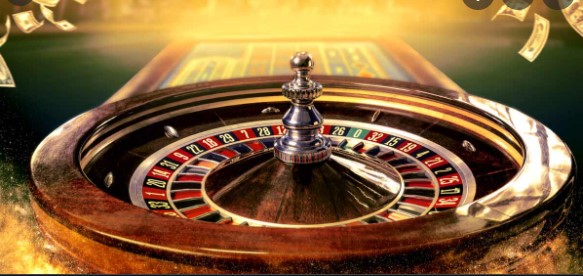The home profit for one zero roulette is 2.7%, while on a double zero roulette table is 5.26%. A bet on one number only is referred to as a straight-up and pays 35 to 1. You will receive 36. However, you should be getting 37 in European Roulette and 38 in the USA on double zero roulette wheels without a home profit. The probability of winning big is reduced as a result of house advantage. Players should evade putting bets on a single number and bet on smaller chances that could include up to the winning numbers in the end. The possibility of you winning is reduced when you play at an American table, for it’s an additional zero slot in it.
Are betting strategies in roulette effective? Firstly, let’s look at the history of this game, which has some appreciable bearing on this question’s answer.
Roulette is a game that records back to 1655. It was produced by Blaise Pascal and meant small wheel’ in French. To start with, it was just played in monasteries for amusement but was soon adopted by French casinos, where it soon picked on as a popular game of chance. There are various legends about roulette, the most commonly quoted one being that if you sum up all the numbers on roulette, you receive the number 666 – the beast’s indication. The match was played in the USA late in the 1800s, and they introduced a slightly different version. So does this make a variety to the players, which they perform? You bet it does!
Now, back to the gambling strategies and what to do. Firstly, both variations of roulette. Europe is the hottest one, mainly because of its lower house edge at 2.63%. Another more modern variant in American roulette has an excess slot numbered 00. It had been introduced with the US casino owners that enjoyed the gain generated from the first version but wanted to maximize their yield, and by incorporating the 00, they raised the house edge to 5.26%. So the first way to increase your chances of winning at roulette is to prevent American Roulette tables like the plague!
Now, let’s looks at the real bets and odds (all figures are for European Roulette). A Straight Up chance (gambling on just 1 number) provides a 35-to-1 payout, but the actual likelihood of the ball landing on the amount you select is 1 in 37. The contrast is where the casino gets its gain. While a return of 35/1 looks good on paper, it’s a risky bet to put, so use it sparingly. Other stakes are available, and they vary from gambling on two numbers (known as a Split Bet) to gambling on red/black, even/odd, or low/high, and these last three options give the shortest odds of Evens (1-to-1). So, if you focus on those three, together with Column Bets (covering 12 numbers) or Dozen Bets (also 12 amounts but in various blocks), you’ll be increasing your odds of getting a return. This doesn’t suggest that you should completely ignore the longer-odds bets; however, adopt a plan which will see you get a little return often, as opposed to a significant return but infrequently. The latter route is guaranteed to send you bankrupt!
One thing to consider roulette is it is a random game. Thus the results of one spin don’t have any bearing on future wheels. Just because the past five reels have landed, Red does not alter the likelihood of another one being Red too. The roulette disk has no memory!
If you place most of your chances on the short-odds ones, with only a tiny fraction of your money on the long odds bets, you will find a steady yield but not a great deal of profit. It would help if you mixed in a couple of the Straight Up, Street, and Split (3 numbers) stakes to try to find a profit increase, but very few. And bear in mind, only play on tables with one 0 – avert the 00 at any cost! There are betting strategies in roulette that work; make sure you use them next time you play in a casino.
Ah, roulette! A game as captivating as it is elusive. Driven primarily by the whims of chance, its unpredictability has stirred players for generations. But what’s the deal with the betting strategies, and do they hold water?
Consider the famed Martingale system for a moment. On the surface, it’s alluring. After each loss? Double your bet! And when you finally win? Go back to your original stake. Sounds simple, right? But here’s the hiccup: you need deep pockets. What if you keep losing, and you hit the table’s limit before victory graces you? It’s a gamble, no pun intended.
Then there’s the Labouchère. A tad complicated, perhaps. You decide on a win target, fragment that amount, and then gamble based on those fragments. Quite like the Martingale, it’s founded on a hopeful balance between victories and defeats. But, alas, hope doesn’t guarantee anything, especially in a game of roulette.
Have you heard of the D’Alembert? Some roulette aficionados swear by it. Touted as a safer bet, this strategy is all about adjusting your stakes: up a unit post-loss and down one post-win. The rationale? Over time, your wins and losses should even out. But then, time is a funny thing. And in the world of roulette, even a long stretch might not bring that elusive balance.
And oh, the Fibonacci! Mathematics, sequences, and betting—quite the cocktail! If you lose, march one step forward in the famed Fibonacci sequence. A win? Retreat two steps. While it might seem a touch less aggressive than our friend Martingale, it’s not without its pitfalls.
Dive deep into the mechanics, and you’ll realize: these strategies, though fascinating, don’t change the game’s inherent bias. That roulette wheel doesn’t care for your strategies; its randomness ensures the house always has its edge.
But here’s a thought. Maybe, just maybe, the joy isn’t in winning. It’s in the thrill, the strategy, the hope. These systems? They jazz up the experience. If you do dabble, remember this: it’s a game. Revel in it, but always be aware of the risks. Don’t chase windmills, hoping for consistent victories. See roulette for what it truly is—a dance with chance. Play smart, play safe, and most importantly, know when to gracefully bow out.

